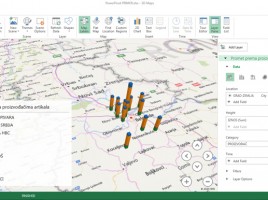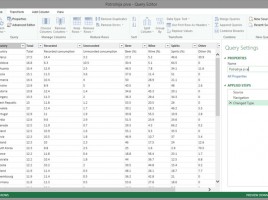
Same thing last year
Time Intelligence functions are often used for reviewing implementation of the goals at the same time last year. In what follows we will mention a few of DAX functions that cover this area. First, there is a function SAMEPERIODLASTYEAR which should monitor business results in the same period last year. And then there are functions DATEADD and PARALLELPERIOD by which we can monitor the achievement of objectives in the previous or next period (month, quarter, or year) in relation to the current data.




